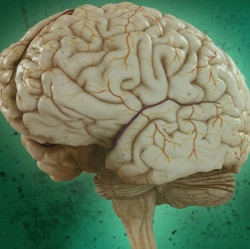
Soccer may be having a concussion crisis, similar to American football. The issue of dementia in soccer began drawing attention after the death of British player Jeff Astle in 2002 at the age of 59. Astle had been well-known for his ability to head a goal, and the coroner attributed his passing to "death by industrial disease."
According to the Jeff Astle Foundation, more than 250 former professional soccer players have suffered from some form of neurodegenerative disease, including some members of England’s 1966 World Cup team who have Alzheimer’s.
Until the publication of Tuesday’s paper, only four soccer players were known to have CTE: Astle, Brazilian star Bellini, amateur American player Patrick Grange, and Curtis Baushke, who played youth soccer through high school. The new report in the journal Acta Neuropathologica doubles the number of cases of soccer players known to have CTE.
CTE has been commonly associated with American football. However, "I think it points out again that this is an equal-opportunity disease," said Dr. Ann McKee, director of Boston University’s CTE Center, who was not involved in the new study. "It just depends on repetitive head impacts."
The study investigated the lifestyles and career paths of 14 deceased soccer players who had had dementia, 12 of whom died of advanced dementia.
Six of the families granted permission for postmortem examinations to look into the cause of their dementia, and four were confirmed to have CTE. All six also had symptoms of Alzheimer’s disease, a form of dementia.
Postmortem investigations are the only definitive way to identify CTE.
"This is the first time CTE has been confirmed in a group of retired footballers," said Dr. Helen Ling of the University College London Institute of Neurology, who led the study. "They all sustained minor blows to the head thousands of times."
The men in the study had been playing professionally — though one also played regularly on an amateur level — for an average of 26 years and had developed dementia at an average age of 63. Most Alzheimer’s sufferers first develop symptoms in their mid-60s.
McKee noted that because of the players’ ages, it wasn’t uncommon to see both Alzheimer’s and CTE. However, she asked, "can just this exposure to mild impacts not just cause CTE but aggravate Alzheimer’s?"
Ling pointed out that although previous studies have shown a correlation between increased head injuries and greater risk for Alzheimer’s disease, dementia risk also increased with age. At this point, she said, research needed to be done to "find out if dementia is more common in footballers than in the normal population."
None of the players studied had experienced significant concussions during their careers, indicating that repetitive blows to the head — such as through hitting other players, the ball or goalposts — are playing a key role.
